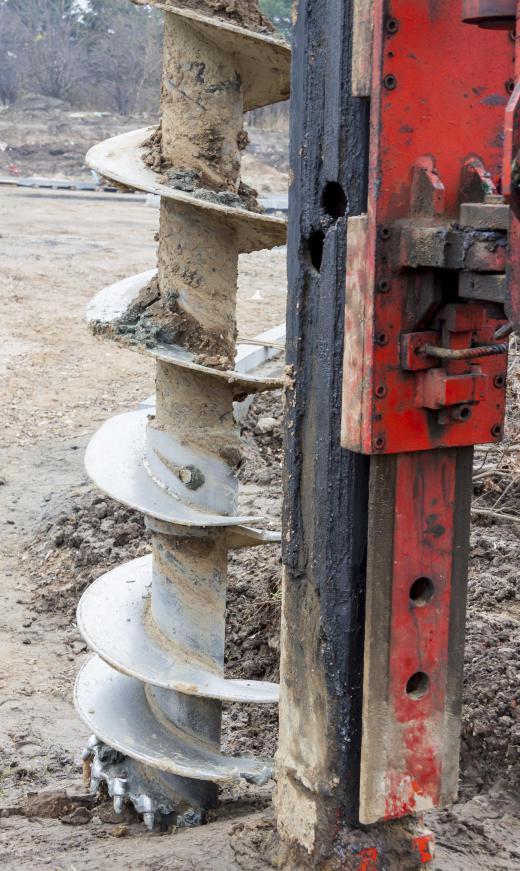Hydraulic drills are a type of heavy equipment that can be used in a number of different construction, excavation, and drilling operations. Designed to bore through just about any type of substance, the hydraulic drill is commonly used in various types of excavating projects as well as drilling for oil or natural gas, or even as part of the process of scientific research of the earth. While drills of this type can be utilized in several different situations, the basic design remains the same.
There are actually two different types of these drills. One is the manual or hand-held hydraulic drill. This design makes it relatively simple to drill into the earth and collect soil samples. The samples can be used for geological analysis, or even for soil analysis before planting crops. These simple drills usually are equipped with an electric motor, a simple pump, and a tank to collect the samples.

An industrial hydraulic drill is usually mounted on some type of heavy machinery. Cranes may include a drill of this type when the idea is to loosen large amounts of soil for excavation. A hydraulic drill may be mounted onto the framing of an oil rig, making it easy to lower the drill into position and begin the process of boring into the ground in search of an oil deposit. Since drills of this type are capable of boring through just about any type of material, these heavy-duty designs can handle layers of rock and clay with the same ease that it can work through dirt.
Coolant is a common feature with hydraulic rock drills. This is necessary to prevent the drill from overheating during use. In some cases, water or some type of treated coolant is released in a slow but steady flow as the drill moves deeper into the ground. The liquid can aid in softening a layer of hard packed dirt, or even aid in making it easier to move through a layer of clay. This action helps to minimize the chances of the drill itself overheating and locking up during use.
As with any type of hydraulic equipment, a hydraulic drill must receive regular maintenance in order to operate at peak efficiency. Generally, the drill should be cleaned thoroughly after large projects, and inspected for any wear or tear on the shaft end of the drill. Any components that appear to be damaged or somewhat worn should be replaced before the next use. Simple maintenance and parts replacement will make it possible for the drill to remain in constant use for a number of years, which in turn helps to keep operational costs to a minimum.

